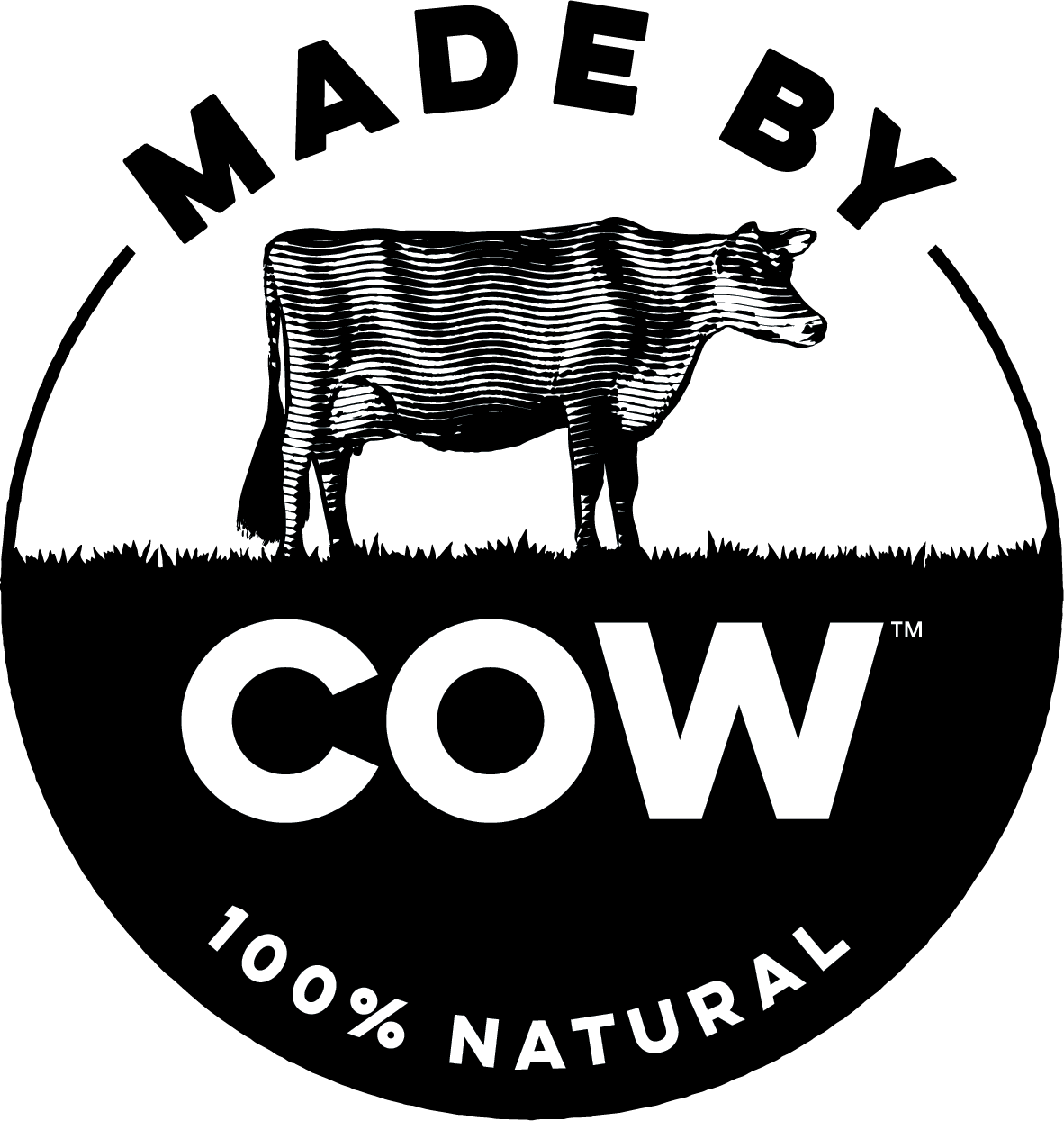Homemade Raw Milk Camembert Cheese
Michelle’s Raw Milk Camembert
This recipe takes time, but for those of you who are willing to commit, you won’t be disappointed. Using our cold pressed raw milk, this raw milk camembert cheese has a rich flavour and a deliciously creamy texture.
A big thank you to one of our customer’s, Michelle, who shared this recipe with us.
Before you start:
Wait for a day that is going to be 27 degrees or less for best results. Start in the morning to give yourself enough time to complete the process.
Ingredients:
4 litres Made By Cow Cold Pressed Raw Milk
¼ teaspoon freeze dried M starter granules
1/16th teaspoon white mould spores
1.25ml rennet in 12.5ml cool pre boiled water
Non iodised salt
Equipment:
Access to a wine fridge (regular refrigerator is too cold)
10 litre plastic container with lid
Insulated box/bag large enough for the plastic container e.g. Styrofoam box
Hot water bottle and cover
Digital stem thermometer
3ml syringe
Slotted spoon
Small round cheese hoops (x5)
Cake rack
Glass baking dish
Chux type wipes
Method:
Day 1
Heat 4 litres of Made By Cow Cold Pressed Raw Milk to 32 degrees C.
Put the 10 litre plastic container into an insulated box/bag.
Pour the heated milk into the 10-litre container.
Add the ¼ teaspoon of freeze dried M starter granules.
Add the 1/16th teaspoon of white mould spores.
Gently mix well.
Put the lid on the plastic container then place then filled hot water bottle on top. Close the insulated box/bag and leave for 90 minutes. After 90 minutes, add the 1.25ml of rennet in 12.5 ml of cooled pre boiled water. This will set the curd.
Gently mix well, then replace lids and leave for 35 to 40 minutes. Cut the curd into 3cm cubes, replace the lids and leave for 5 minutes.
Turn the curd by gently lifting with a slotted spoon or skimmer, and jiggle. Replace the lids and leave for 10 minutes. Repeat this process twice more.
Boil 1 litre of water and allow to cool to 60 degrees C. Gently drain off 1 litre (1/3rd) of the way and discard.
Slowly add about 1 litre of the 60 degree C water. Add only as much as required to get the temperature of the curd to 34 degrees C, but no more than 35 degrees C.
Be sure not to overheat the curd. Ensure that the temperature is even throughout by gently stirring. Replace the lids then leave for 10 minutes to cook the curd.
Drain off as much water as possible and discard.
Using the slotted spoon fill each cheese hoop to the top with curd. They will quickly sink down.
Put the cake rack onto the baking dish and put the filled cheese hoops onto the cake rack.
Cut chux type wipes into squares 12cm by 12cm and cover each cheese hoop with a square.
Invert the hoops after 30 minutes. Then invert hourly 5 to 6 times. Make sure cheese falls evenly. Leave cheese in the hoops overnight. Do not refrigerate.
Day 2
Make up a brine solution of 150g of non-iodised salt to 1 litre of room temperature water. Iodised salt will inhibit the lactic bacteria.
Add 1/16th teaspoon of white mould spores to the brine. Take the cheese out of the hoops and add to the brine.
Leave for 30 minutes, then turn cheese over and leave for another 30 minutes.
Remove cheeses from the brine and put back on the rack to air dry for 24 to 48 hours. No lid or cover is required, however throw over a netted food cover.
Turn cheese 2 to 3 times a day.
When cheese is clammy, but not wet, transfer to a smaller lidded plastic container with a drying or cake rack to keep it from sitting on the bottom of the container.
Put into wine fridge between 11 degrees C to 15 degrees C for 8 to 10 days.
Turn the cheese every second day. Wipe out the plastic container with paper towel to remove excess moisture.
Day 8
If the cheese is covered in a soft white furry mould, remove and wrap in foil. If not, leave for another 1 to 2 days.
Place in a regular refrigerator and label with:
• the date you started making the cheese
• the date 4 weeks from that – Ready to Eat date!
• the date 3 months from the date you made the cheese – the Best Before Date.
Leave the cheese for 4 weeks, then enjoy!

